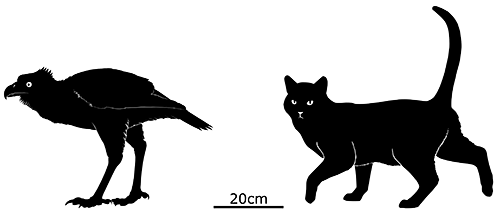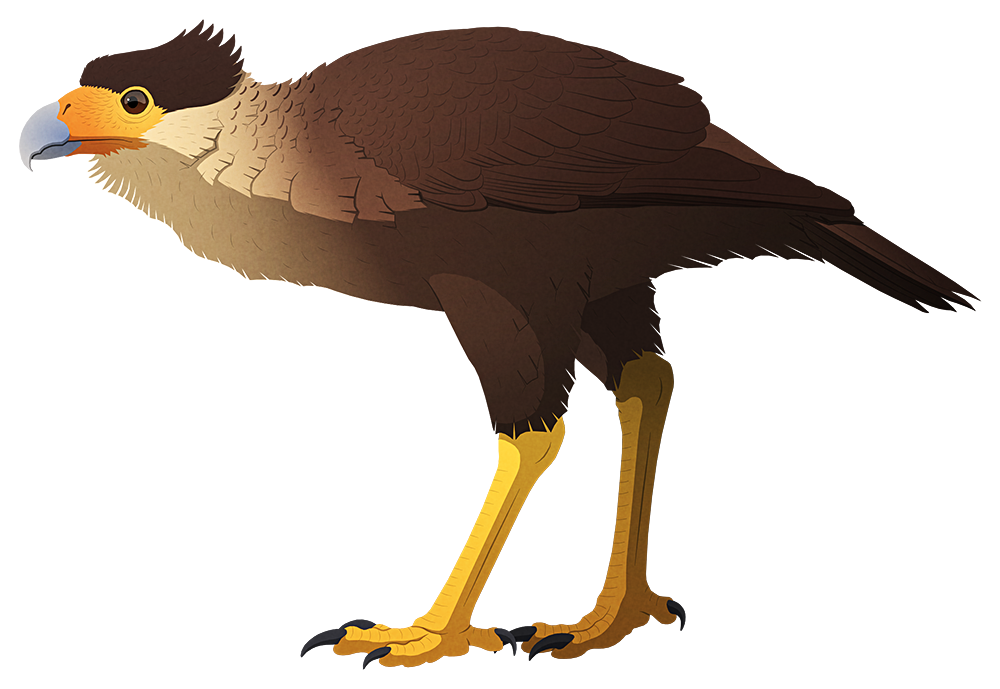Jamaica is unusual among the Caribbean islands for having had relatively few predatory birds.
One of the few known fossil species is Caracara tellustris, a close relative of the modern crested caracaras that probably evolved in the mid-Pleistocene between about 1.2 and 0.4 million years ago.
About 60-65cm long (2′-2’2″), it was similar in body size to larger individuals of its living relatives but was heftier built and had slightly longer legs, and its wings were reduced enough that it was either a very weak flier or entirely flightless.
It lived only in the dry scrubland around the southern coast of the island, and probably mainly preyed on reptiles, small rodents, and crabs using its strong legs — a lifestyle very similar to the modern secretarybird. Like other caracaras it would have also opportunistically scavenged on carrion, which there would have been little competition for.

The known remains of Caracara tellustris date to as recently as 100 CE, showing that it existed well into the Holocene and survived through the initial arrival of humans on its island home (about 4000 BCE). This is likely due to its inhospitable hot, arid, and thorny habitat, where it would have been left relatively undisturbed, and it may even have persisted until the time of European colonization in the 1500s.
Unfortunately the scrubland was also very limited in size and the Jamaican caracara would have always been quite a rare species. If it was still around by then it would have faced a combination of introduced predatory mammals and habitat destruction by agriculture, which would have driven it into extinction so quickly its existence was never even noticed by naturalists at the time.

